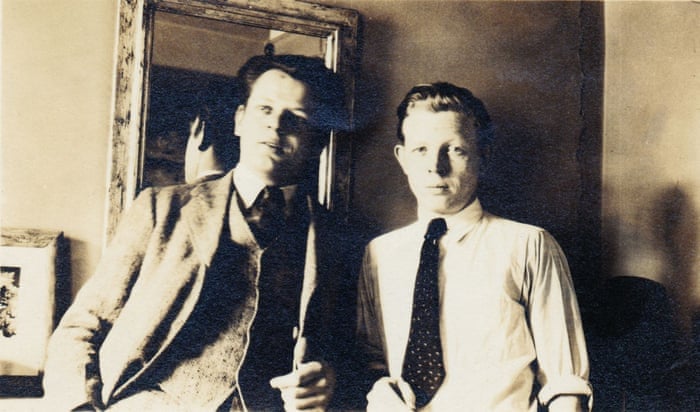
Did Jackson Pollock become an artist because he was copycatting his older brother? Believe it or not, the pugnacious Abstract Expressionist was the baby brother in his family—the youngest of five sons born to Leroy and Stella Pollock. What’s more, he wasn’t his family’s first artist. That title belonged to Charles, the eldest of the Pollock brood and a decade Jackson’s senior.
“Charles started this whole damn thing,” said Sanford McCoy, the Pollocks’ middle brother, once in an interview. “Charles was the fellow who had the intellectual curiosity all along.”
Now, “Charles and Jackson Pollock” an exhibition at the Society of the Four Arts in Palm Beach, Florida, (through March 28) marks the first time that works by the two brothers have been shown side by side.
Charles Pollock, Chapala 5 (1956). Courtesy of American Contemporary Art Gallery, Munich.
Nearly 70 paintings by Charles are on view along with a set of drawings by Jackson, and other ephemera, including paint-splattered stools from Jackson’s studios, one of only two of his surviving notebooks from the 1950s, and his only surviving sculpture.
Charles, it seems, was an intrepid character. From a family with no real artistic background, he set out to New York in 1926 to study at the Art Students League (Jackson was 14 at the time). In New York, he would find a longstanding mentorship with acclaimed regionalist painter Thomas Hart Benton—who would later become one of the younger Pollock’s most important teachers. In fact, it was Charles who ultimately convinced Pollock to make to move out to New York in 1930.
Jackson Pollock’s painting bench, which was famously photographed by Hans Namuth.
Both brothers looked to many similar sources, but integrated them into their own work differently. Thomas Hart Benton, who had met Diego Rivera in Paris, was a catalyst in turning both artists onto the work of the Mexican Muralists, but while Charles leaned more toward rural scenes of labor, Jackson was captivated by the their mythological subject matter.
They ultimately turned to abstraction—the younger Pollock first, it’s worth noting—but whereas Jackson’s drip works took inspiration from Native American sand paintings, Charles was fascinated by the movements between figuration and abstraction found in some Arabic calligraphy.
Charles Pollock, Post-Rome (Red) (1964). Courtesy of American Contemporary Art Gallery, Munich.
“Charles was the master of color and found a wonderful way to experiment with abstract and structured forms in the Color Field style. It was also based on Charles’s fascination with the paintings of Matisse,” wrote Kirstin and Otto Hübner, founders of Munich’s American Contemporary Art Gallery, which helped organize the exhibition.
By the late 1940s and early 1950s, the brothers’ careers diverged. In 1947, Pollock adopted his famous dripped and poured painting techniques, and, under the patronage of Peggy Guggenheim, would skyrocket to international fame.
Charles, meanwhile, would leave the New York scene. After working for the Resettlement Administration and Federal Arts Project in Washington, DC, Charles moved to Detroit and then to East Lansing, Michigan, where he would spend nearly three decades teaching art at Michigan State University.
Charles Pollock, Untitled. Courtesy of American Contemporary Art Gallery, Munich.
Kirstin Hübner thinks much of his obscurity is due to geographic factors. “He missed the development and the exchange of the New York School with the workshops and the meetings which finally led to the recognition of the Abstract Expressionist style,” she wrote.
Nevertheless, his career followed many of the major developments in American art. Following the completion of a mural at Michigan State University and a reckoning with the limits of Regionalist painting, Charles made his first abstract painting in 1950. He would produce his first body of abstract works, the “Chapala” series (inspired by a long stay on Lake Chapala in Mexico), in 1956.
Jackson Pollock, 6 Sheets from Notebook (circa 1950-54). Courtesy of American Contemporary Art Gallery, Munich.
Despite the disparities in their careers, Charles seemed to maintain a mentoring role to his little brother.
“The relationship was very special and intimate—they were strongly devoted to each other. Jackson told Charles about his problems and fully trusted his advice,” Hübner said in an email. “Very early on, Jackson was regularly plagued by doubt both in regard to himself and the people surrounding him; he welcomed his brother’s encouragement and confidence. In the 1920s and ‘30s, Charles encouraged his brother’s artistic ambitions, in particular, helping him complete his studies.”
Pollock’s untimely death would have a strong impact on Charles, who would take a three-year break from painting. In 1959, he would begin painting again, producing two series, Black and Gray (1959–60) and Untitled [Black] (1961–62). Characterized by monumental black shapes, the works are symbolic of his feeling of mourning and loss.
The affectionate aspect of their relationship is a key organizing principle of the exhibition, which places the brothers alongside each other in a complementary, rather than competitive, manner. It also offers Charles Pollock his own space in the development of modernism.
“Charles has a very important place in art history. He has followed his own path in creating an oeuvre whose colors and planes signify powerful compositional abilities,” Hübner concluded.